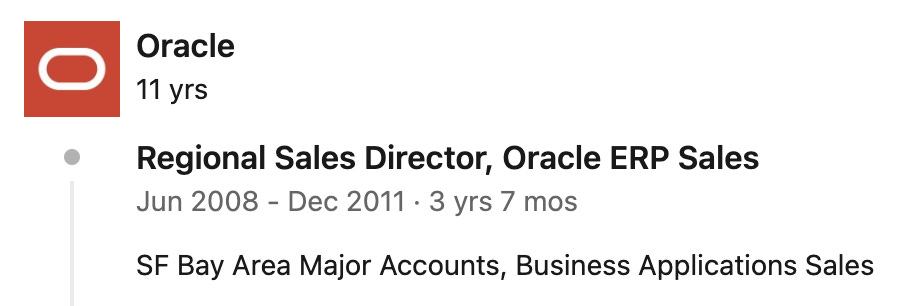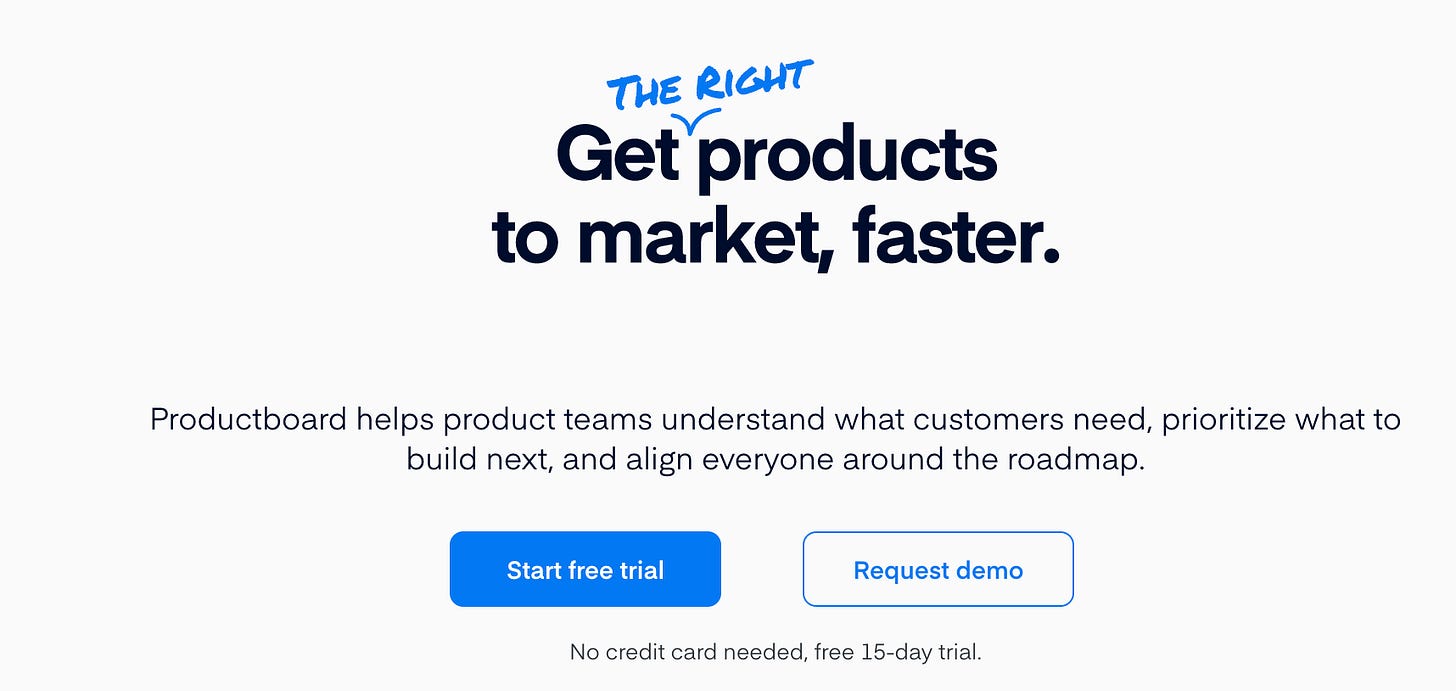Is there an enterprise sales gene?
If you don't find it here, you won't find it anywhere
The existence of the ‘sales gene’ implies the existence of the SMB, mid-market, and enterprise sales genes. The first two are rather commonplace.
Enterprise sales, on the other hand, (and to mix my metaphors) is a different kettle of fish.
And if science can’t find the enterprise sales gene in D’Arcy Doyle, it won’t find it anywhere.
D’Arcy spent 11 years at Oracle, selling database management systems on either side of the dot-com bubble bursting.
He is the man you’d get if you wanted to carve out an early advantage in the enterprise sector while going head-to-head with only one of the most viral tools of all time.
Box became Dropbox’s worst nightmare in the enterprise sector during D’Arcy’s seven years there.
He’s who you’d get when you’ve cracked SMB and mid-market and are now beginning to go from $10M in ARR to $100M.
You want a man like him at the helm if you’ve found PMF, you’ve just raised a Series B round, and are beginning to set your sights on the Fortune 500.
And so late last year, we sat down with the current SVP of Sales at Productboard in an attempt to uncover the building blocks of the enterprise sales gene.
Here’s what we found.
Meet Toplyne: The behavioral AI used by Canva and Vercel to find sales pipeline in their self-serve funnel.
A nose for the ICP (and a way to get to them)
D’Arcy started in sales, selling sailing experiences to kids in the late ‘80s.
Whether you’re selling Caribbean cruises for kids in Greenwich, or enterprise software, identifying the ICP, or - rather who is NOT takes a certain nose to sniff out.
“It's probably the same thing you learn from any sales job that you have. If I go to one of you guys and you don't have any kids, I'm probably talking to the wrong people. “ - D’Arcy
It might be Marketing’s job to create awareness and FOMO among the end-users.
“So we'd go to these school fairs and we'd talk about these summer programs. And the kids would say ‘I could go live on a sailboat with 10 other kids. That'd be really fun.’ And so these kids would tell their parents, hey, let's have these folks come to their house.”
And the importance of navigating your way to the decision-maker is amplified at the enterprise scale.
“But if I go to somebody who goes to in the Northeast, and they have access to their parents, and their parents have a nice house. And they want me to come in and pitch it, then I think I know I have a good target, right?”
An obsession with value (and a way to prove it)
‘Selling to pain’ is all well and good, but do you have the rigor to get to the second and third-order effects of the pain?
“A lot of times within a sales cycle, our understanding of the pain that we're trying to address - and whether it’s poignant for their management team - is very critical.”
More layers of management are involved in all purchasing decisions today. “We’re seeing that across our customer base,” says D’Arcy.
No enterprise deal is won alone. Tag a value engineer to a deal to articulate the value of the solution to various layers of management.
And float collateral like nobody’s business.
“Is this something that can be described in a small slide deck? Is this something that be written on a one-pager, so that the company can surface it throughout the organization?”
And then articulate it in the language of the C-suite.
“If you bring a value engineer into a cycle, someone to help you prove to the C-level why it makes sense to implement any solution, then you better be tied to some number that makes sense, right? So is a 100K worth of software gonna deliver a 100K worth of value? It better deliver MORE.”
Positioning for the ages (with a little help from marketing)
D’Arcy then spent 7 years at Box, where he became the SVP of Sales, for North America.
He joined in 2011 as VP. At the time, Box was locked in a head-to-head with Dropbox. And losing.
“If a company had 10 box licenses, we knew it would have a 100+ Dropbox users. It was 10x.”
In some ways, at least. But with D’Arcy on board in early 2011, Box made a crucial move on the chessboard that Dropbox would realize much later had caught them off-guard.
They invested in security, compliance, and admin panels, positioning themselves as the “Enterprise Dropbox,” making early inroads into this market.
“Box was first to market with an administration console. And that became like a really important differentiator for us. We eventually started marketing it as a solution to your Dropbox problem.”
The “Dropbox problem” D’Arcy is talking about is your IT department not knowing what content is being traded on your users’ Dropbox.
“It could be just grandma’s pictures.”
^A problem you wouldn’t have if you just used Box’s admin console.
People care about the output (and not the features)
Take the example of how Productboard changed the way they talked about the product as they started going upmarket.
This is their website hero in 2017.
And this is today.
Notice the difference?
D’Arcy’s key insight was this: The value of Productboard is not in the features, or in the product manager who uses it. The real value is the output of Productboard.
“Productboard tells you how to make products that are better, with customer signals, because it’s a customer-centric system.”
As D’Arcy came on board, this became a key mantra at the org. Getting people to talk about the output of Productboard, rather than the features became an internal rallying cry.
Sales demos began to change. They were no longer feature-focused. Or function-focused. Or trial-focused. Or even demo-focused.
Sales calls moved from “If you see something you like, stop me and I'll show it to you a little bit deeper” to the top-down value sell of “This is what it’s gonna cost you because you’re not able to sign up additional customers if you don't build in the right direction.”
The difference was night and day.
The virtue of storytelling
There’s a time and place to be PLG. And a time and place to be not.
Most PLG tools breach SMB and the best maybe even crack mid-market. But at the enterprise layer, buying decisions aren’t made by an individual with an individual use case in mind.
The enterprise buyer is thinking about what you can do for their business.
We try to get them to see their business in the software. In a poc, a proof of concept, in a deep dive demo at Productboard. Where we say “Let us use your data. Let us set up your hierarchy. Let us bring your business to life within the structure of our software and our workflow so that you can see how we can help you.”
And that’s the critical piece: to have your user see their reflection in your software.
You can catch the whole 1-hour conversation with D’Arcy on a platform of your choice.
🎙️ Spotify:
🍎 Apple podcasts: Link
🎥 YouTube:
Oh, and btw - we’re doing a sit-down session with Ramli John (author of Product-led Onboarding) next Tuesday. Sign up here:
Ramli’s going to tear down the onboarding journeys of some usual suspects, take your questions, and talk about why product friction is sometimes desirable.
If you want Ramli to tear down your onboarding, hit us up in replies.














